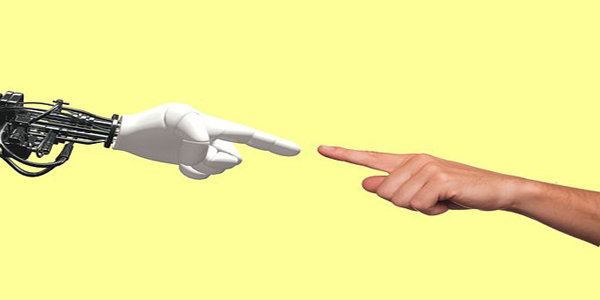Editor’s Note: Over the next few weeks on CPO Rising, we’re publishing some “best of” 2019 articles as we reflect on the year and prepare for the new year ahead.
“Anything that can be imagined is an image of the truth.” ~ William Blake, English poet and artist, 1757-1827
Perhaps it’s my English heritage or my millennial imagination, but I happen to gravitate towards this quote. Literally anything is possible. Don’t believe me? Consider this: twenty years ago, roughly when I first learned of the quote, people weren’t buying digital music. Commercial drones weren’t really a thing. Reality TV stars didn’t become presidents. Top Gun was perfect the way it was and would never get a sequel. But I digress. Bottom line — anything can happen.
As a result, things have changed quite a bit since 1999. The Dot Com Revolution came and went, only to grow up and dream again in a post Y2K business world. Digitization and automation have pervaded, creating endless data which has given rise to even more innovations, like mobility, the Cloud, advanced analytics, “Moneyball”-style assessments, intelligent automation, augmented intelligence (say it!), and a new industrial revolution.
Industry 4.0, as it has been called, is the next phase of manufacturing. By its namesake, it is the fourth industrial revolution representing not just the digitization and automation of manufacturing (Industry 3.0), but the linking of physical assets with digital tracking systems and systems of record; and the integration of systems to create a “system of systems,” like manufacturing and logistics networks, “smart factories,” and even “lights-out manufacturing.”
On a more granular level, Industry 4.0 involves the use of a host of new technologies and innovations, namely: additive manufacturing (3D printing), augmented reality (AR), Blockchain distributed digital ledgers, Cloud-computing infrastructures and platforms, cognitive computing (aka, augmented intelligence, or AI), connected devices (the “Internet of Things”), predictive analytics, robotics and robotic process automation (RPA), and virtual assistants.
There’s a lot to Industry 4.0, much of which the procurement world has already begun to apply to its own systems and processes.
- Cloud. The business world, including procurement, has been migrating to the Cloud for a decade or longer; and procurement teams are increasingly ditching standard software licenses and embracing solution suites or best-of-breed solutions “as-a-Service,” made possible by the Cloud. They’re more convenient and many would argue, more cost effective, to on-premises solutions and are pipelines to greater innovation.
- Cognitive computing has been taking the procurement world by storm, as solution providers and procurement teams move beyond standard process automation to “intelligent process automation”, machine learning, and AI, and even rebranding it as “cognitive procurement.” Harnessing the power of Big Data, running advanced analytics, and trying their hands at predictive analytics have been positioning select Chief Procurement Officers (CPOs) and their teams on the bleeding edge of innovation.
- Robotics/RPA, some might say, is a new term for an existing capability. But the reality is that RPA takes on a specific task that is repeatable and scalable and completes it independently (beyond initial human tasking). It allows knowledge workers in and out of procurement to delegate tactical work to machines and reallocate their own resources to strategic planning and decision making. For eCommerce, maybe it’s the program that scans hundreds of competitor sites looking for the best deal on a product (Honey, anyone?).
- Virtual Assistants. There are a lot of aspects to supply management — most everyone could use a hand, right? Some solution providers have already integrated intelligent Virtual Assistants into their eProcurement platforms, like Basware, while others are using it to get ahead of supply chain risk management (riskmethods). Others are sure to follow in a sort of arms race towards whose virtual assistant can better serve their human masters, and in what niche capacity.
But what about the other aspects of Industry 4.0? Is it a bridge too far for procurement? Hardly. Tune in next week when I’ll explore a handful of Industry 4.0 applications to procurement and how the profession now shares many commonalities with manufacturing, and even logistics.
RELATED ARTICLES
Procurement 4.0 Technologies — Making the World Smaller
How ISM is Reaching, Retraining, and Retaining the Procurement 4.0 Workforce
Supply Management’s Long, Slow March Towards Digital Transformation

